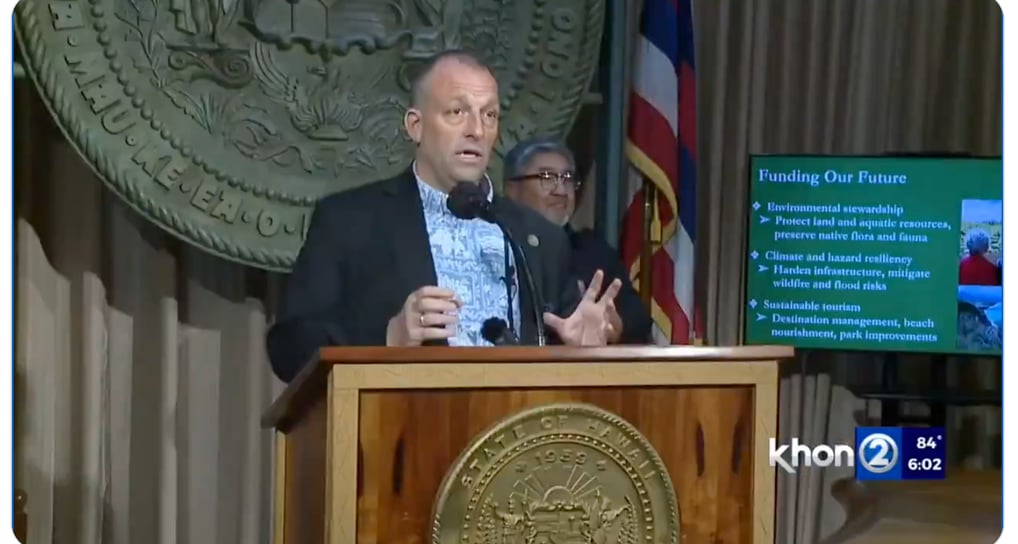Hawaii’s Pioneering Climate Tax on Tourists: A Bold Step Forward or a Risky Gamble?
6/1/20253 min read


Hawaii’s Pioneering Climate Tax on Tourists: A Bold Step Forward or a Risky Gamble?
Introduction
Hawaii, the tropical paradise that captivates millions of visitors each year, has just made a historic move. On May 27, 2025, Governor Josh Green signed into law the United States’ first climate change tax targeting tourists. Known as the "Green Fee," this 0.75% increase in the transient accommodations tax aims to raise nearly $100 million annually to protect the state’s environment. But is this a game-changer for climate action, or a risky gamble that could backfire on Hawaii’s tourism-dependent economy? Let’s break it down.
The Climate Crisis in Hawaii: Why Now?
Hawaii’s islands are on the front lines of climate change. Rising sea levels threaten its iconic beaches, wildfires (like the devastating 2023 Lahaina fire) ravage its landscapes, and overtourism strains its natural resources. The Green Fee is part of a broader strategy to fund resilience projects, addressing everything from eroding shorelines to biodiversity loss. As an archipelago, Hawaii’s ecosystems are irreplaceable—not just for residents but for the 9.4 million tourists who visited in 2017 alone.
How the Green Fee Works
Effective January 2026, the Green Fee will impact anyone staying in hotels, vacation rentals, or arriving via cruise ships. Here’s the breakdown:
Hotels and Rentals: A 0.75% hike in the existing 10.25% transient accommodations tax (TAT), raising it to 11%.
Cruise Ships: A prorated tax based on the number of days a ship docks in Hawaii.
For instance, a $400 hotel stay will now include an extra $3 for environmental protection. While that might seem minor, the cumulative effect across millions of visitors is significant.
The Purpose: Funding Environmental Stewardship
The revenue will support critical initiatives:
Protecting native forests and wildlife.
Enhancing climate resilience against storms and sea-level rise.
Mitigating tourism’s environmental footprint, such as overuse of water and land.
Governor Green frames this as a "win-win," arguing that tourists, who benefit most from Hawaii’s natural beauty, should help preserve it. But will this message resonate with visitors?
Economic Implications: A Double-Edged Sword
Hawaii’s tourism industry is colossal, making up 21% of the state’s economy. The Green Fee could either strengthen this sector by preserving the attractions that draw visitors or deter them altogether. Historical precedents offer mixed lessons:
Success Stories: Bhutan and the Galápagos Islands have thrived with similar fees, using them to fund conservation and limit overtourism.
Cautionary Tales: Other destinations have seen visitor numbers plummet, hurting local economies.
The big question is whether Hawaii can balance environmental goals with economic viability.
Global Context: Part of a Growing Trend
Hawaii isn’t alone in this approach. The European Union has long used tourism taxes to fund sustainability, and cities like Amsterdam and Venice are experimenting with similar measures. But in the U.S., this is uncharted territory. Will other states follow Hawaii’s lead, or will this experiment serve as a warning?
The Debate: Supporters vs. Critics
Supporters argue that the Green Fee addresses a $360 million annual conservation funding gap. They believe tourists, who disproportionately benefit from Hawaii’s environment, should contribute to its protection.
Critics worry about the economic fallout, especially post-COVID. They argue that additional costs could push visitors to cheaper alternatives, undermining Hawaii’s recovery.
What’s Next for Hawaii and Beyond?
As the Green Fee takes effect, Hawaii will be a case study for the world. Will it become a model for climate action, or a cautionary tale of economic missteps? The coming years will reveal the answer.
Thought-Provoking Questions
Should tourists be responsible for funding environmental protection, or is this an unfair burden?
Could similar climate taxes work in other U.S. states, or is Hawaii’s situation unique?
How can destinations balance economic growth with environmental sustainability without alienating visitors?
Explore deep insights on current events and growth.
Vision
Truth
hello@insightoutvision.com
+1-2236036419
© 2025. All rights reserved.
